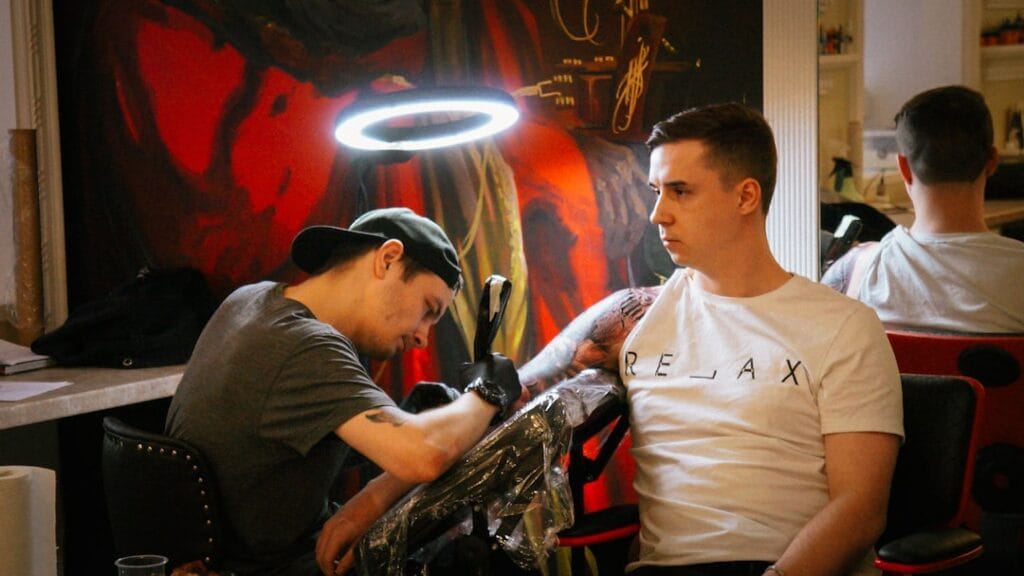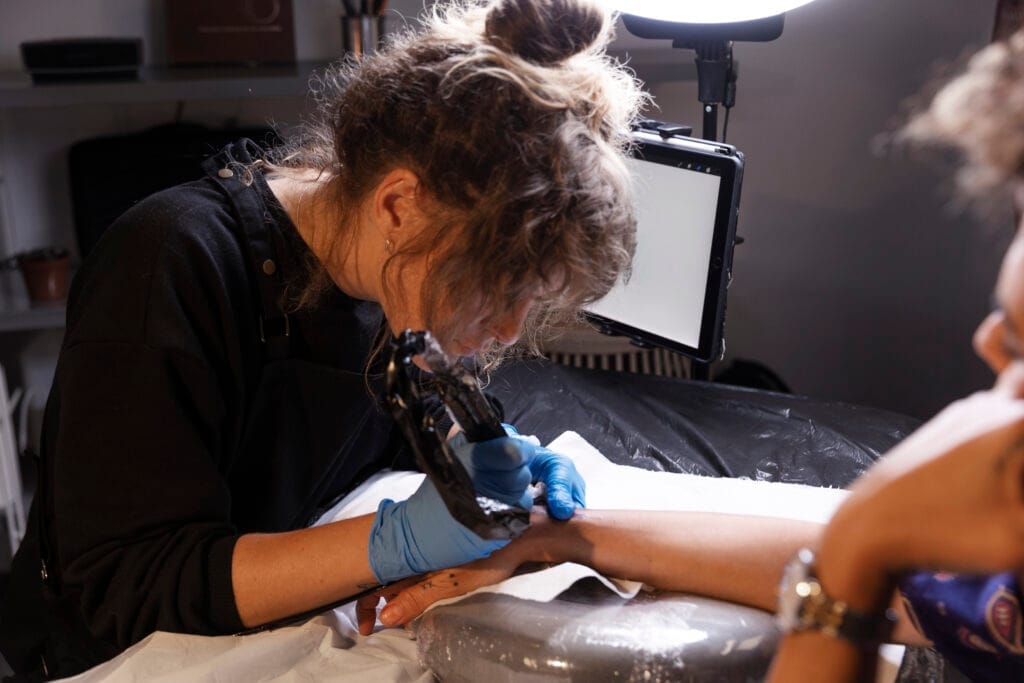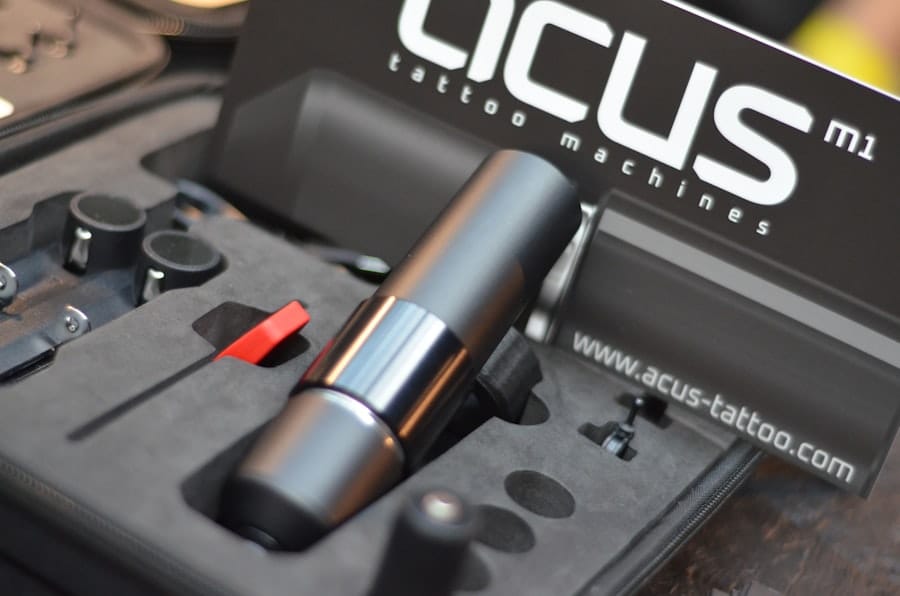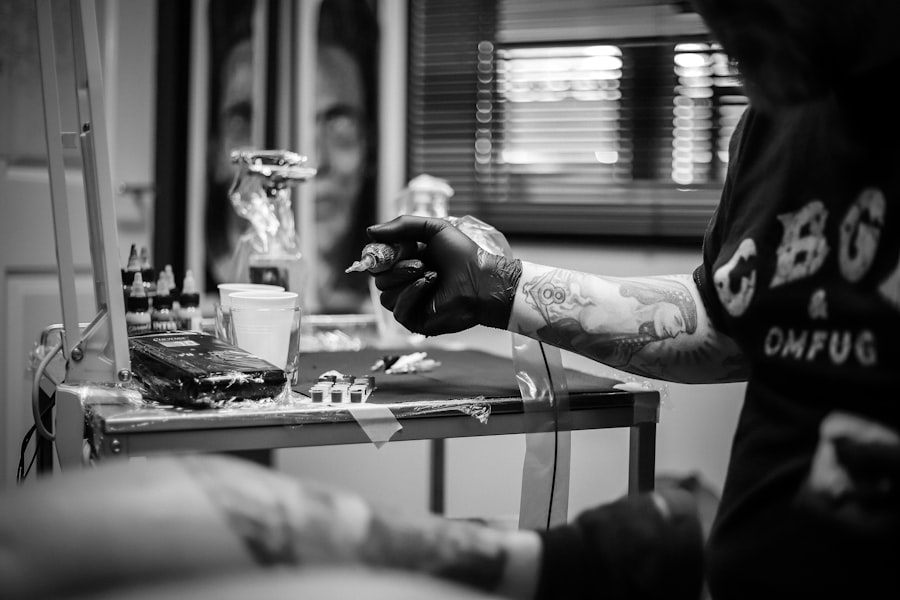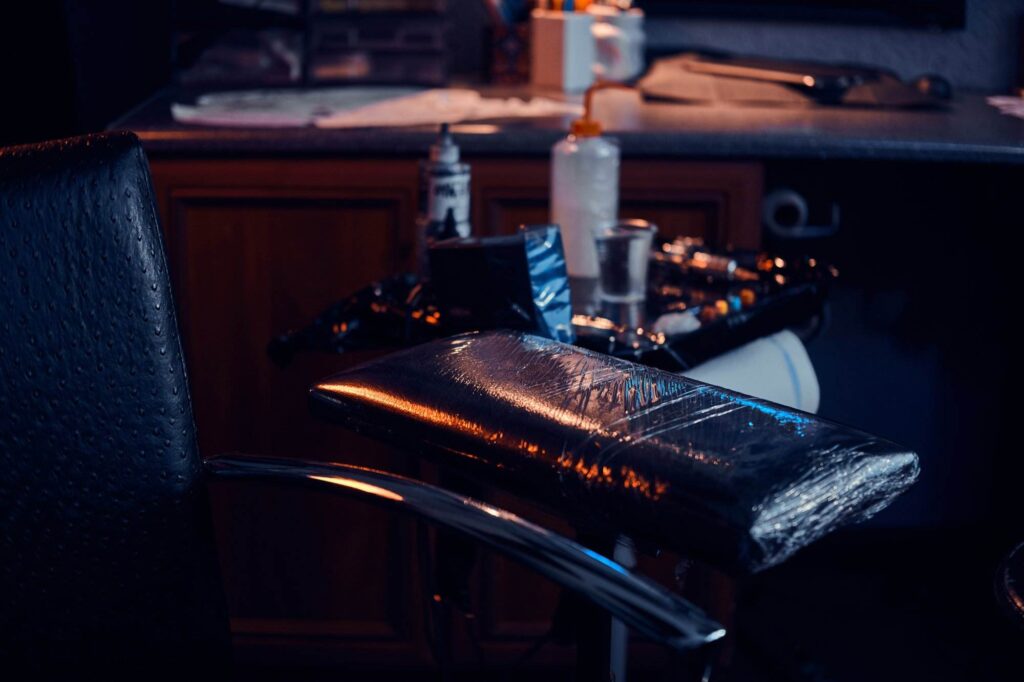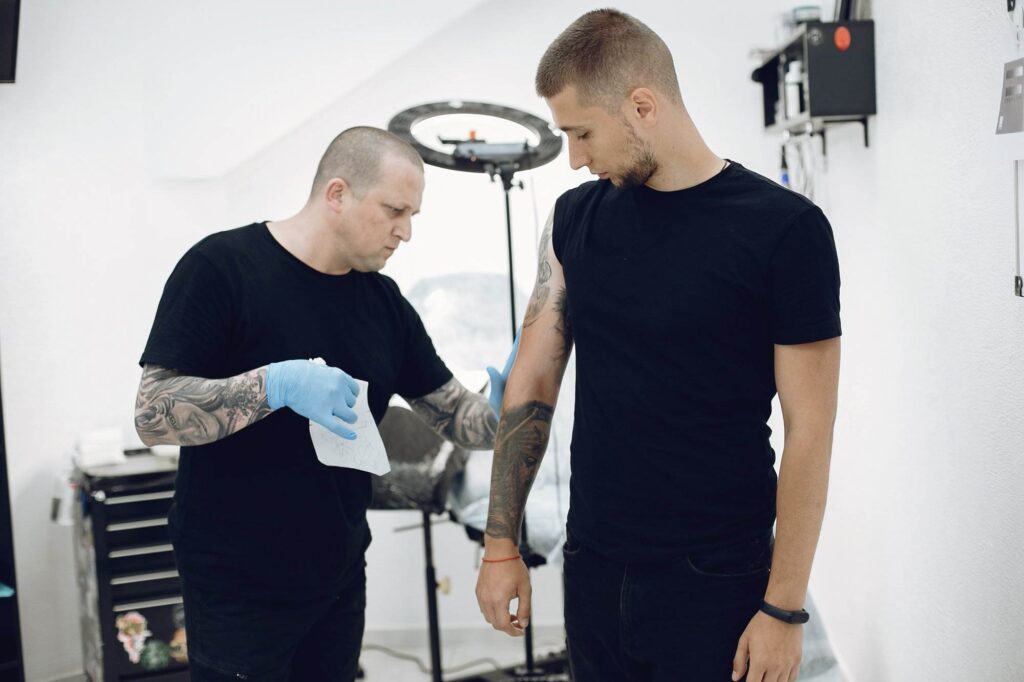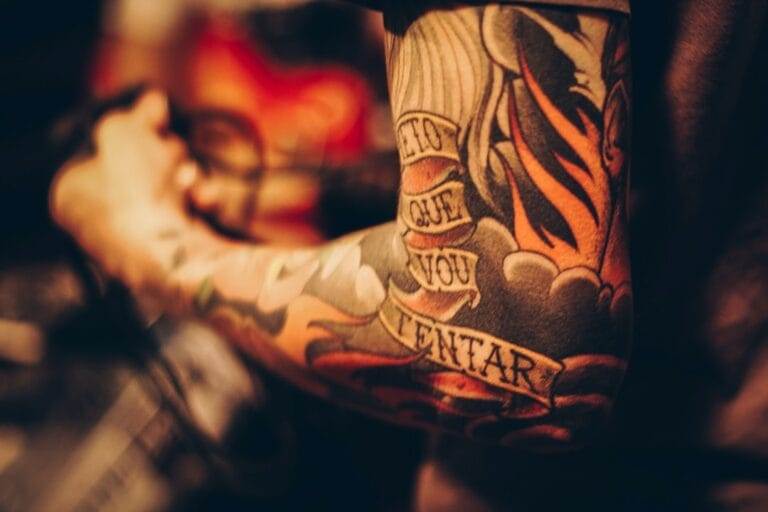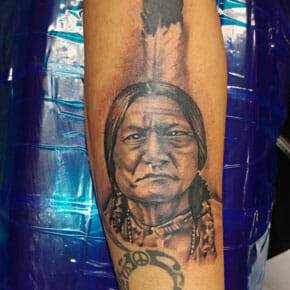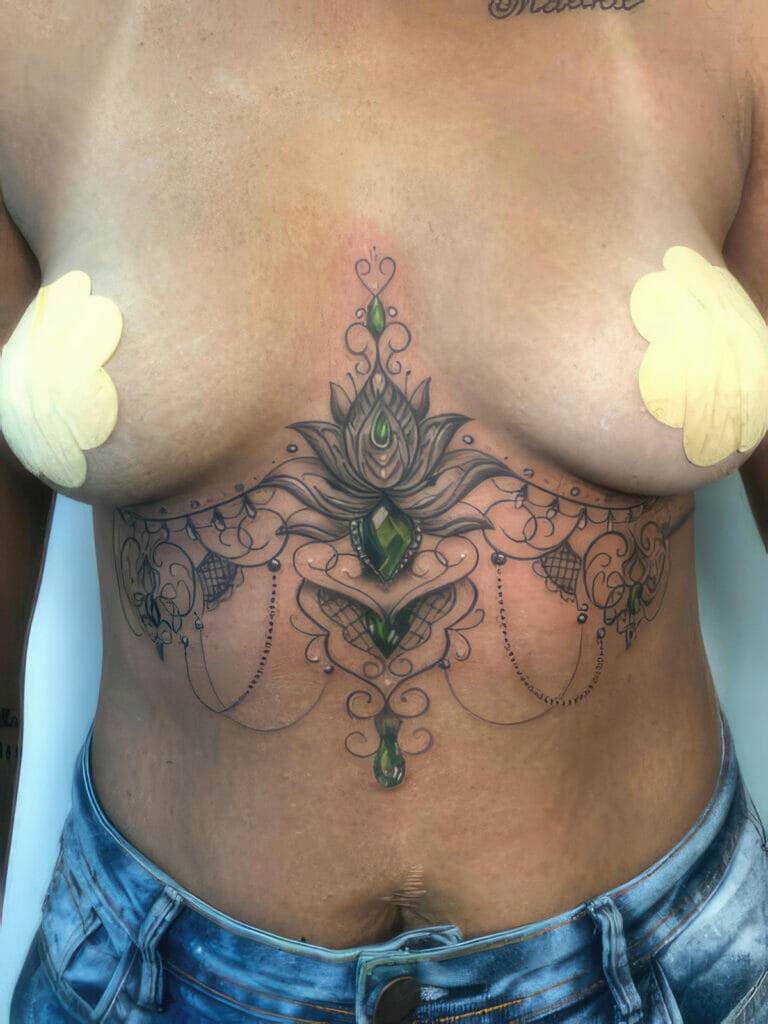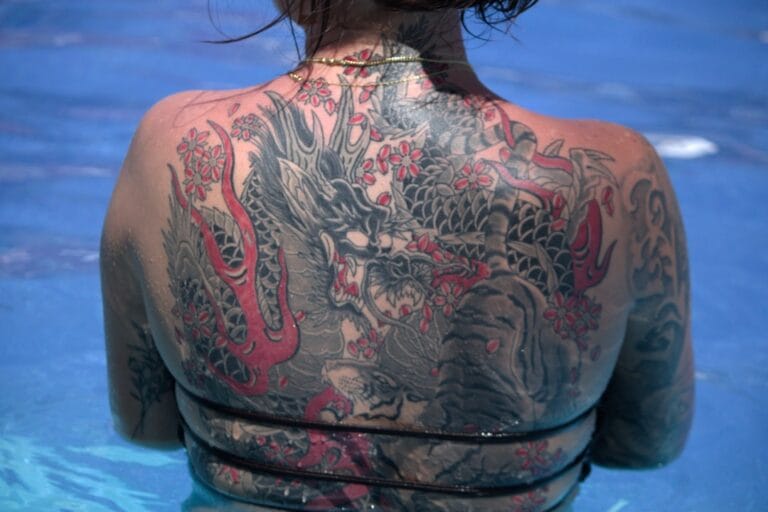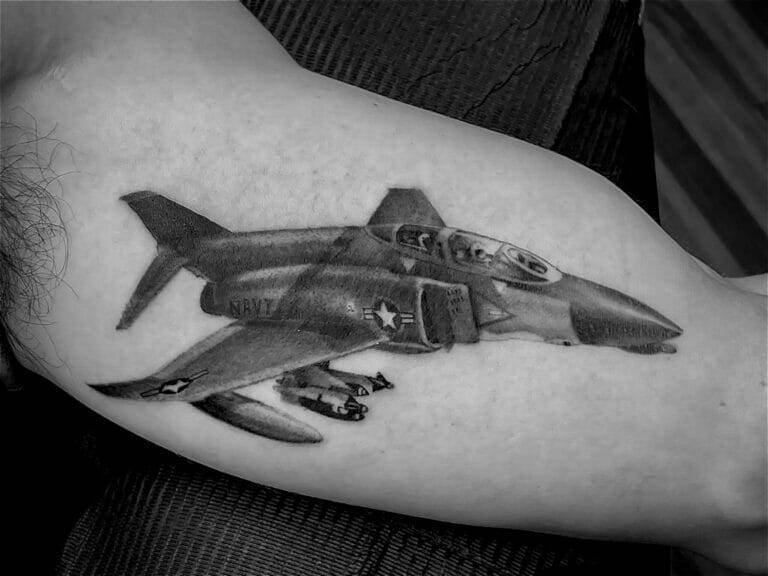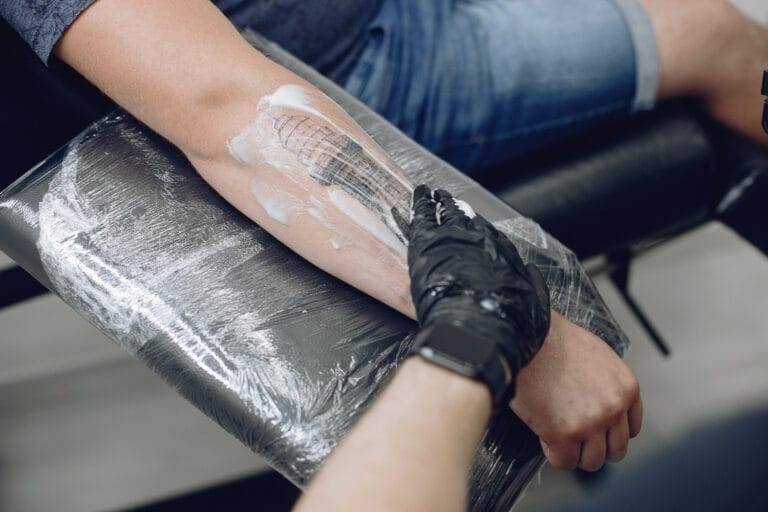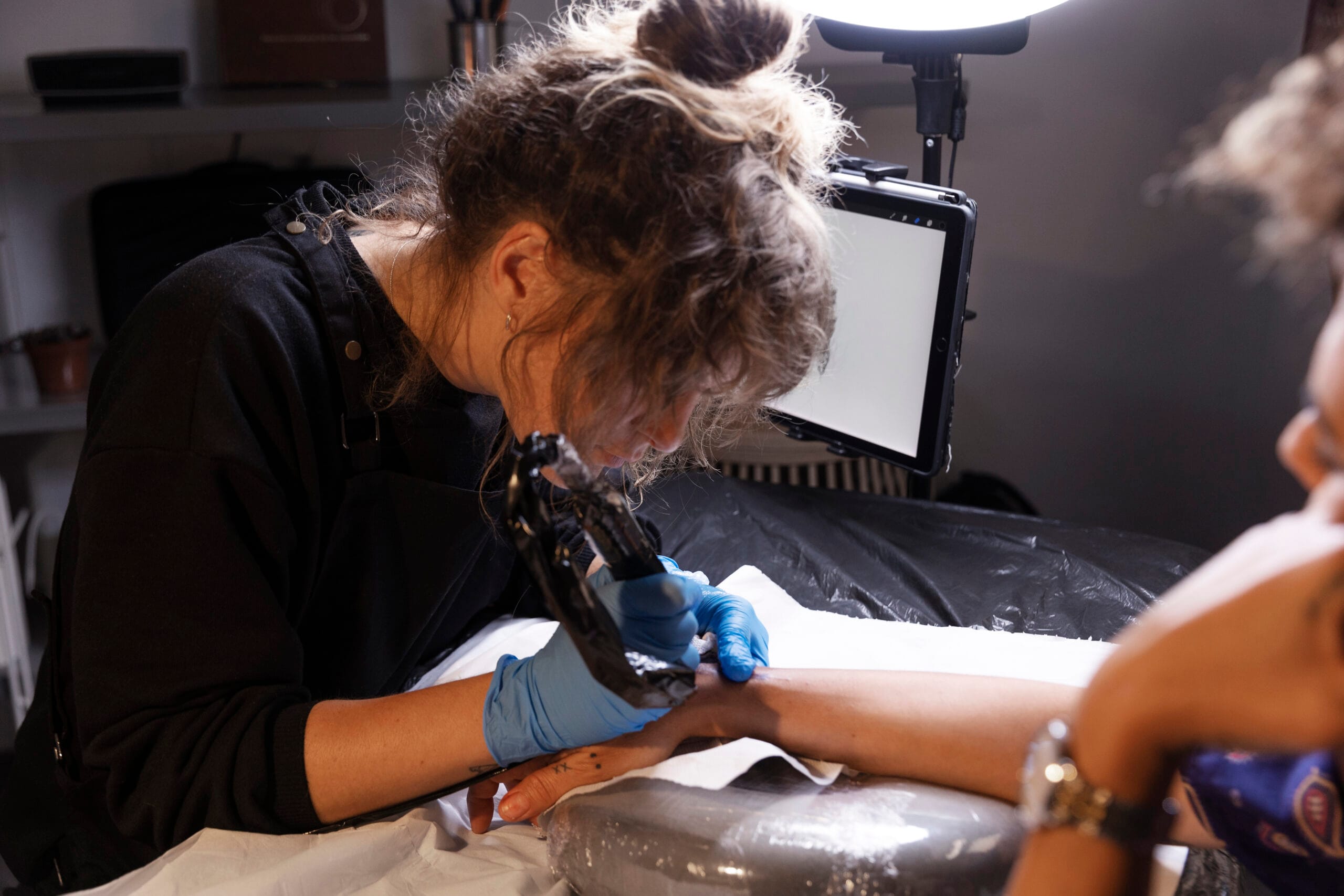
In recent years, blackout tattoos have surged in popularity, captivating the attention of both tattoo enthusiasts and casual observers alike. This bold form of body art involves the extensive use of solid black ink to cover large areas of the skin, often transforming the canvas into a striking visual statement. The trend has evolved from traditional tattooing practices, where intricate designs and colorful imagery were the norm, to a more minimalist yet powerful approach that emphasizes the beauty of negative space and stark contrast.
As social media platforms like Instagram and TikTok have proliferated, the visibility of blackout tattoos has increased, leading to a growing acceptance and appreciation for this unique style. The rise of blackout tattoos can also be attributed to a shift in societal attitudes towards body art. As tattoos become more mainstream, individuals are increasingly seeking ways to express their identity and personal narratives through their bodies.
Blackout tattoos offer a radical departure from conventional designs, allowing wearers to make bold statements about their individuality. This trend has resonated particularly with younger generations who are eager to challenge norms and redefine beauty standards. The allure of blackout tattoos lies not only in their aesthetic appeal but also in their ability to convey a sense of empowerment and autonomy over one’s body.
Key Takeaways
- Blackout tattoos are a rising trend in body art, characterized by large areas of solid black ink covering the skin.
- The process of creating blackout tattoos involves carefully covering the skin with solid black ink, often requiring multiple sessions to achieve the desired effect.
- Blackout tattoos have a bold and impactful aesthetic, challenging traditional ideas of beauty and body image.
- The trend has sparked controversy, with cultural and social perspectives questioning its impact on individuality and cultural appropriation.
- Blackout tattoos can be seen as a symbol of rebellion or self-expression, allowing individuals to reclaim their bodies and make a statement.
Understanding the Process: How Blackout Tattoos are Created
Creating a blackout tattoo is a meticulous process that requires skill, precision, and an understanding of the human anatomy. The journey typically begins with a consultation between the artist and the client, where they discuss the desired coverage area and any specific design elements that may be incorporated. Unlike traditional tattoos that often involve intricate line work and shading, blackout tattoos focus on solid fills of black ink.
This means that artists must be adept at applying ink evenly and efficiently to achieve a uniform appearance across large sections of skin. The actual tattooing process can be time-consuming, depending on the size and complexity of the design. Artists often use specialized techniques to ensure that the ink is saturated properly, which may involve multiple passes over the same area.
Pain tolerance varies from person to person, and clients should be prepared for a potentially intense experience, especially when covering sensitive areas of the body. Aftercare is also crucial in the healing process; proper care helps prevent complications such as infection or fading, ensuring that the final result remains as striking as intended.
Bold Aesthetics: Exploring the Impact of Blackout Tattoos on Body Image
Blackout tattoos challenge conventional notions of beauty and body image by embracing boldness and simplicity. The stark contrast of solid black ink against the skin creates a dramatic effect that can be both striking and empowering. For many individuals, these tattoos serve as a form of self-affirmation, allowing them to reclaim their bodies in ways that resonate with their personal journeys.
The aesthetic appeal of blackout tattoos lies in their ability to transform the skin into a canvas that tells a story—one that is often deeply personal and reflective of individual experiences. Moreover, blackout tattoos can serve as a form of body positivity, encouraging individuals to embrace their bodies as they are. In a world where societal pressures often dictate standards of beauty, these tattoos offer an alternative narrative that celebrates uniqueness and authenticity.
By opting for a blackout tattoo, individuals may find themselves feeling liberated from traditional expectations surrounding body art. This shift in perspective can foster a greater sense of confidence and self-acceptance, allowing wearers to take pride in their choices and express themselves unapologetically.
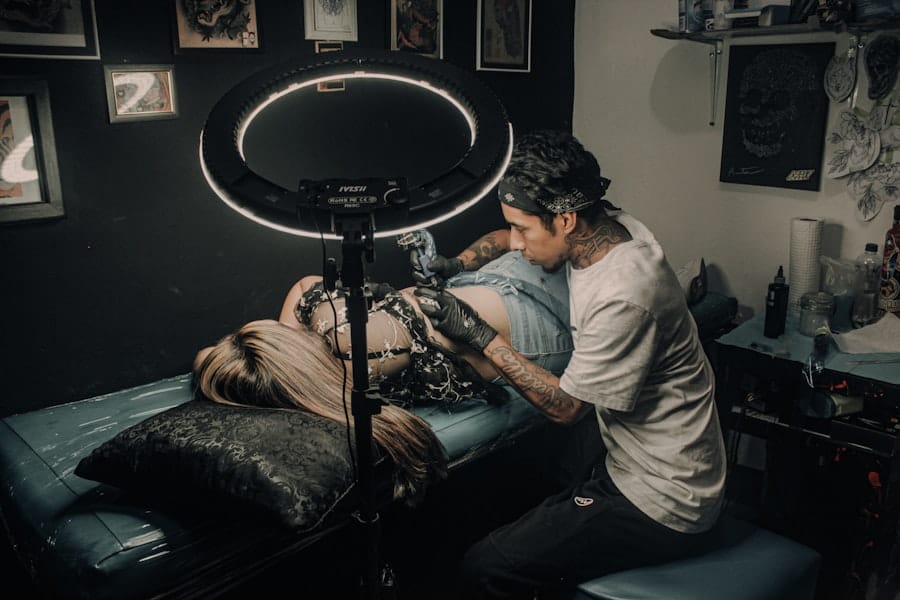
The Controversy Surrounding Blackout Tattoos: Cultural and Social Perspectives
Despite their growing popularity, blackout tattoos are not without controversy. Critics argue that this trend may trivialize cultural symbols or traditional tattoo practices that hold significant meaning within various communities. For instance, some cultures view tattoos as sacred forms of expression tied to heritage and identity.
The widespread adoption of blackout tattoos by individuals who may not understand or respect these cultural contexts raises questions about appropriation and authenticity in body art. Additionally, there are social implications associated with blackout tattoos that merit discussion. Some perceive them as a rejection of traditional beauty standards or as an act of rebellion against societal norms.
This perception can lead to misunderstandings about the motivations behind choosing such a bold form of body art. While some individuals may indeed view blackout tattoos as a form of defiance, others may simply appreciate the aesthetic or seek personal expression through this medium. Navigating these complexities requires an open dialogue about the meanings we assign to body art and the diverse motivations behind individual choices.
Blackout Tattoos: A Symbol of Rebellion or Self-Expression?
The interpretation of blackout tattoos as symbols of rebellion or self-expression varies widely among individuals. For some, these tattoos represent a conscious choice to defy societal expectations surrounding beauty and body art. By opting for a design that eschews traditional motifs in favor of solid black ink, wearers may feel empowered to challenge norms and assert their individuality.
This act of rebellion can be particularly resonant for those who have faced judgment or stigma related to their appearance. Conversely, many individuals view blackout tattoos as a deeply personal form of self-expression rather than an act of defiance. For these wearers, the choice to get a blackout tattoo may stem from a desire to convey their unique identity or life experiences without relying on conventional imagery.
In this sense, blackout tattoos become a canvas for storytelling—each design reflecting the wearer’s journey and personal narrative. Ultimately, whether seen as symbols of rebellion or self-expression, blackout tattoos invite individuals to explore their identities in ways that resonate with their values and beliefs.
The Psychology of Blackout Tattoos: What Drives People to Get Them?
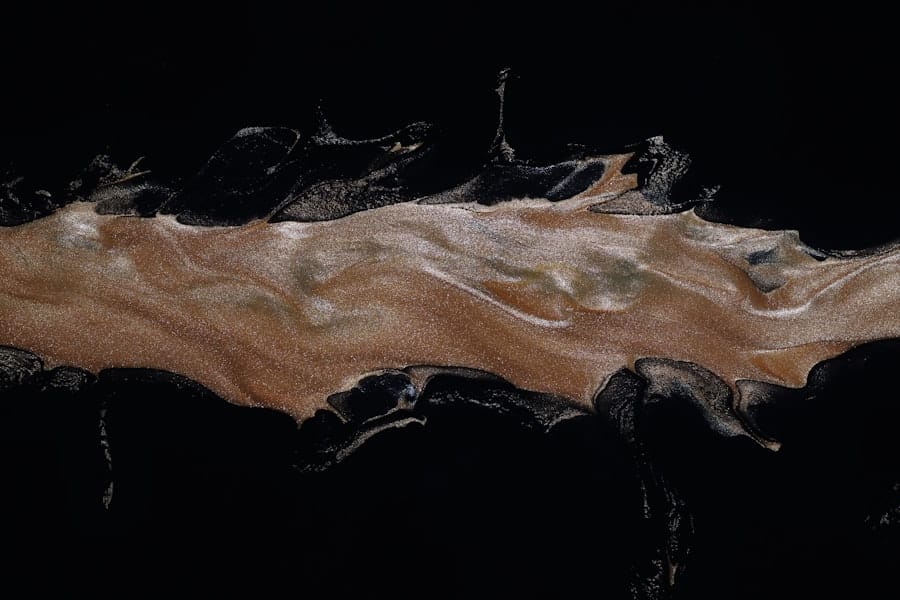
Symbolism of Healing and Transformation
The act of covering scars or painful memories with solid black ink can symbolize healing and transformation—a way to reclaim one’s body after experiencing hardship.
A Desire for Control and Autonomy
In this context, blackout tattoos become more than just aesthetic choices; they represent powerful narratives of resilience and recovery. Additionally, the allure of blackout tattoos may stem from a desire for control over one’s body and identity. In an age where external influences often dictate how individuals perceive themselves, choosing a bold form of body art can empower wearers to assert their autonomy.
Empowerment and Self-Ownership
This sense of agency is particularly important for those who have felt marginalized or misunderstood in society. By embracing blackout tattoos, individuals can take ownership of their bodies in ways that reflect their true selves—free from societal constraints or expectations.
Blackout Tattoos in Pop Culture: Celebrities and Influencers Embracing the Trend
The influence of pop culture on tattoo trends cannot be overstated, and blackout tattoos are no exception. As celebrities and influencers showcase their own blackout designs on social media platforms, they contribute to the normalization and acceptance of this bold form of body art. High-profile figures who embrace blackout tattoos often inspire their followers to explore similar styles, further fueling interest in this trend within mainstream culture.
Moreover, the visibility of blackout tattoos among public figures has sparked conversations about body art as a legitimate form of self-expression rather than merely a trend or fad. As more celebrities openly share their experiences with blackout tattoos, they help demystify the process and encourage others to consider this unique style for themselves. This cultural shift not only elevates the status of blackout tattoos but also fosters a greater understanding of the diverse motivations behind individual choices in body art.
Embracing Diversity: The Inclusivity of Blackout Tattoos in the Tattoo Community
One of the most compelling aspects of blackout tattoos is their inherent inclusivity within the tattoo community. Unlike traditional designs that may cater to specific aesthetics or cultural backgrounds, blackout tattoos transcend boundaries by offering a universal canvas for self-expression. This inclusivity allows individuals from various walks of life to connect through shared experiences while celebrating their unique identities.
Furthermore, the rise of blackout tattoos has encouraged artists to experiment with different techniques and styles, fostering innovation within the tattoo community. As artists continue to push creative boundaries, they contribute to an evolving landscape where diverse forms of expression are celebrated rather than confined by traditional norms. This spirit of inclusivity not only enriches the tattoo community but also empowers individuals to embrace their own narratives through body art—regardless of background or experience level.
In conclusion, blackout tattoos represent a fascinating intersection of artistry, identity, and cultural discourse within the realm of body art. As this trend continues to evolve, it invites ongoing exploration into the motivations behind individual choices while challenging societal norms surrounding beauty and self-expression. Whether viewed as symbols of rebellion or personal narratives, blackout tattoos offer a powerful means for individuals to reclaim their bodies and assert their identities in an increasingly complex world.
FAQs
What are blackout tattoos?
Blackout tattoos are a style of tattooing where large areas of the skin are filled in completely with black ink, creating a bold and dramatic aesthetic.
How are blackout tattoos created?
Blackout tattoos are created using a technique called solid blackwork, where the tattoo artist uses a single needle to fill in the designated area with black ink, ensuring a solid and uniform appearance.
What are the reasons people get blackout tattoos?
People get blackout tattoos for a variety of reasons, including to cover up existing tattoos, to create a bold and striking visual statement, or to express a particular aesthetic or artistic preference.
Are blackout tattoos painful to get?
Like all tattoos, the pain level of getting a blackout tattoo can vary depending on individual pain tolerance. However, due to the large areas of skin being filled in with ink, blackout tattoos can be more painful than smaller, more intricate designs.
What are the potential risks of getting a blackout tattoo?
As with any tattoo, there are potential risks associated with getting a blackout tattoo, including infection, allergic reactions to the ink, and the possibility of the ink fading or becoming patchy over time.
How should I care for a blackout tattoo after getting it?
After getting a blackout tattoo, it’s important to follow the aftercare instructions provided by the tattoo artist, which typically include keeping the tattoo clean and moisturized, avoiding sun exposure, and refraining from picking at any scabs that may form.
